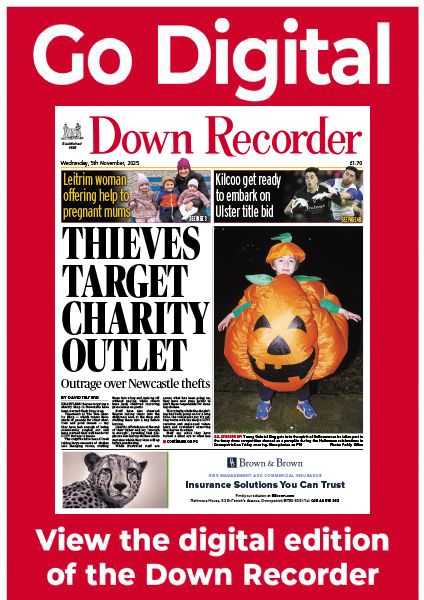Tourism is at the heart of the district’s economy
Tourism is at the heart of the district’s economy
8 August 2012 - by David Telford
THE value of tourism to the district’s economy is continuing to increase.
The area’s once burgeoning construction industry which provided jobs and incomes for many is but a shadow of its former self and new investment in industrial development is extremely unlikely.
Given the district’s unique setting, surrounded by stunning natural assets, increasing emphasis is being placed on tourism, with Down Council working hard to develop facilities and attractions.
Its focus is on investing in existing and new facilities and work is continuing to secure new hotel investment in Newcastle and Downpatrick to not only provide much-needed accommodation, but new jobs to help kick-start the economy.
Council officials hope their efforts will be mirrored by statutory agencies and the private sector as tourism remains one of the district’s major success stories.
Last year, the value of tourism to the local economy was valued at £156m and while this figure is expected to dip this year due to the recession, council officials are continuing to plan for the future.
While creating new accommodation for people to stay is important, council officials are concentrating on what attractions are available to visitors, with the focus on developing the district as a destination, with the Mournes, Strangford Lough and Downpatrick’s Christian heritage hub at its core.
Down Council has been successful in securing capital investment to finance enhancements at Slieve Patrick monument near Saul, St. Patrick’s Grave at Down Cathedral and work is underway to create a new coach lay-by at the historic Saul Church.
Money has also been secured to house the High Cross formerly located outside Down Cathedral in a new home at the Down County Museum and the council is keen to extend the existing pontoon in Strangford.
Elsewhere, new tourist information points will be located across the district and work is continuing to develop a new walking trail in Downpatrick, with the emphasis on the town’s rich Christian heritage.
The local authority’s tourist development officer, Mark Mohan, said investigations are continuing on the potential of a new walking network across large parts of Lecale, linking all the built, pre-Christian and natural landscapes.
“We are also working in partnership with the Downpatrick and Co. Down railway to assist them with the development of what was the old Ardglass and Newcastle railway line. We are in the middle of a funding application process in a bid to try and make this happen,” he explained.
“Down Council is also looking at marking and recognising the landing place of St. Patrick at Slaney River and are looking at a new initiative, in conjunction with the Tourist Board, to tie this in with existing heritage attractions in this area.”
Mr. Mohan said the local authority is also exploring other partnerships with Armagh and Meath councils because of the “obvious connection” with St. Patrick.
A number of car parks in the Dundrum area were enhanced last year and their usage has increased dramatically. Down Council is now proposing a similar scheme between Clough and Strangford with six sites identified for redevelopment to encourage people to stop off at what’s widely regarded as one of the most scenic routes in the district.
“The work includes enhancements to a number of existing car parks and new picnic areas. We are also looking at how to improve access into the Mournes and plan to provide enhanced parking facilities at the Trassey Track car park outside Bryansford,” Mr. Mohan added.
Council chairman Mickey Coogan said tourism growth requires a “concerted and collective” effort across the district and highlighted the importance of the key role the local authority plays in tourism research and development and working with various government departments and private companies.
He added: “The council has a small team of officers taking the the lead on how to promote the district and works with others to make coming to the area a rich and enjoyable experience for the visitor. The district is a popular short-break destination and we have invested hugely to revitalise, regenerate and renew our tourism offering.”


